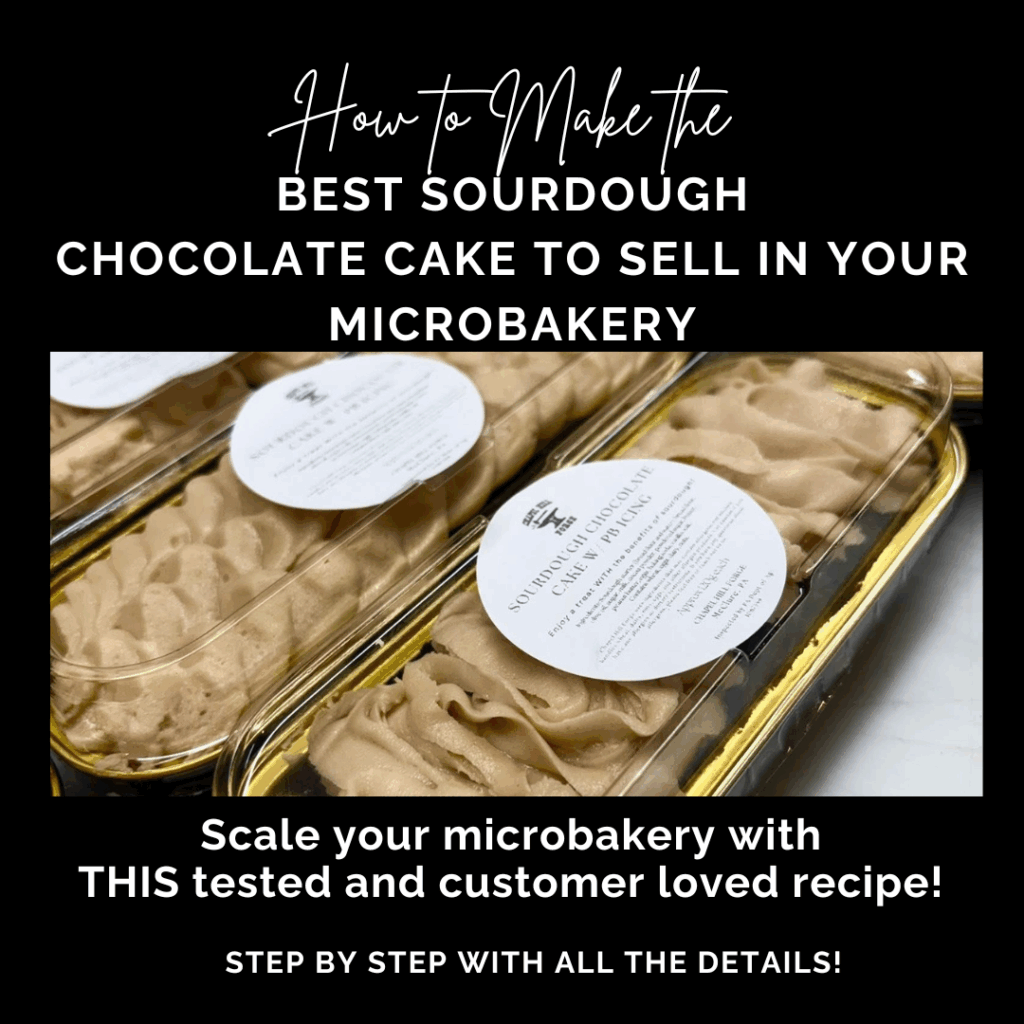How to Price Baked Goods for a Cottage Food Business
Pricing is one of the biggest hurdles new micro and cottage bakers face — and getting it right can be the difference between burning out or building a real, sustainable business from your kitchen. After years of running our own micro bakery here in Pennsylvania, we’ve dialed in a simple pricing method that helps us make a solid living, stay consistent, and feel confident that we’re charging what our work is worth. In this blog post, we’ll break down exactly how we do it — with real numbers, examples, and tips that work for any micro bakery item.
At the core of our pricing system is a basic formula: we calculate the total cost to make a batch, divide that by the number of items we get, and multiply the per-item cost by 4. That’s it. That’s how to price baked goods. This method gives you a fair retail price that covers your ingredients, your time, and enough margin to keep growing. And yes — it really works, whether you’re baking sourdough loaves, muffins, cookies, or cakes.
Real Life Examples for Micro Bakery Pricing: How to Price Baked Goods
Let’s say you make a batch of muffins that costs $15 in ingredients and yields 15 muffins. That’s $1 per muffin to make. Multiply that by 4, and you get $4 per muffin. We usually round up, if needed, like if it’s $2.25 we’d go to $2.50 or even $3, to land on clean, even numbers — depending on your market and what feels right for your customer base.
If you’re thinking, “Wow, that’s a big markup,” you’re right — and it needs to be. That 4x formula accounts for everything beyond just ingredients: the time it takes to prep, bake, clean, shop, package, and sell. Those are all real tasks that take real time — and you don’t get paid for any of them unless you price your products correctly.
Here’s another example. Say you make a sourdough chocolate cake and it costs you $5 in ingredients per 8×8 pan. Multiply that by 4, and your target selling price is $20. You could sell it whole as a premium item, or cut it into slices and price each one accordingly. Either way, this pricing model works — and it applies just as well to bread, bagels, cookies, mini cakes, or any other baked goods you produce in bulk.
We often profit around 75% using this pricing method, and that’s what allows us to actually earn a living from our home-based bakery. Of course, there are other costs to consider — utilities, insurance, paper goods, and any tools you use — so in reality, we estimate our actual take-home margin is closer to 70%, and we’re still profitable. You’ll never account for every single penny perfectly, but this formula gives you more than enough buffer.
often times, our hourly rate comes to anywhere from $35-60 per hour. It just depends on if we are paying someone to help that day or not.
How to Make a Living as a Cottage Baker by Learning HOW to Price Baked Goods
One of the best parts about micro bakery pricing is flexibility. If you’re having a slow week, you can scale back production. If you’re trying to save for something or have a busy season (hello, fall markets!), you can ramp up production and increase your income. It’s not about having to work full-time hours — it’s about baking smart, not burning out. This pricing model gives you freedom.
We’ve had people ask, “But will people really pay that much?” Yes — if your product is high-quality, fresh, and beautifully presented, they absolutely will. People aren’t just buying a muffin or loaf of bread — they’re buying homemade, artisan food that’s made with care. And when you run your numbers and price confidently, you’ll be able to make money while doing what you love. When we truly learned how to price baked goods, life changed forever.
Bulk Recipes for Cottage Bakers and Day in Life as a MicroBaker
To help other bakers succeed, we’ve put together several digital recipe guides designed for bulk baking in micro bakeries. These guides walk you through how to make items like muffins, sourdough cakes, and more — all with batch sizes and prep tips optimized for efficiency and profit. Each guide uses this pricing formula so you can get up and running quickly with confidence.
And if you’re just getting started or want to see how we run our own bakery, check out our YouTube channel. We have videos on what a typical micro bakery day looks like, how to plan your baking week, and even a PA-specific cottage bakery setup guide that covers all the legal stuff. Whether you’re in Pennsylvania or another state, you’ll find helpful, real-world advice to get your bakery off the ground.
In the end, a well-run micro bakery doesn’t need to be a side hobby — it can be a real source of income, flexibility, and joy. If you price smart and bake with intention, you can build a small business that truly supports your life. Grab one of our guides, watch a few videos, and start where you are. Your kitchen has more potential than you think once you learn how to price baked goods.

